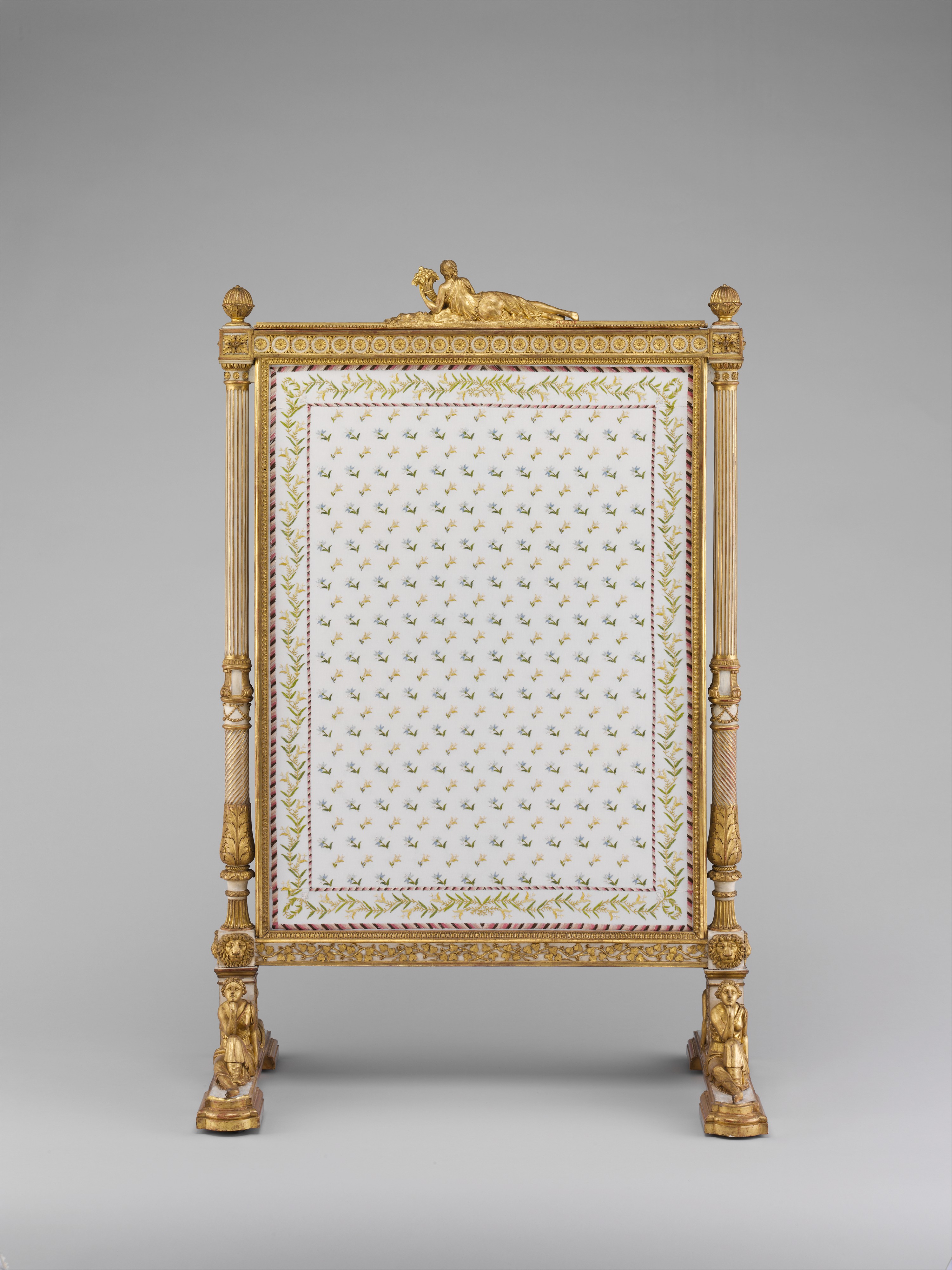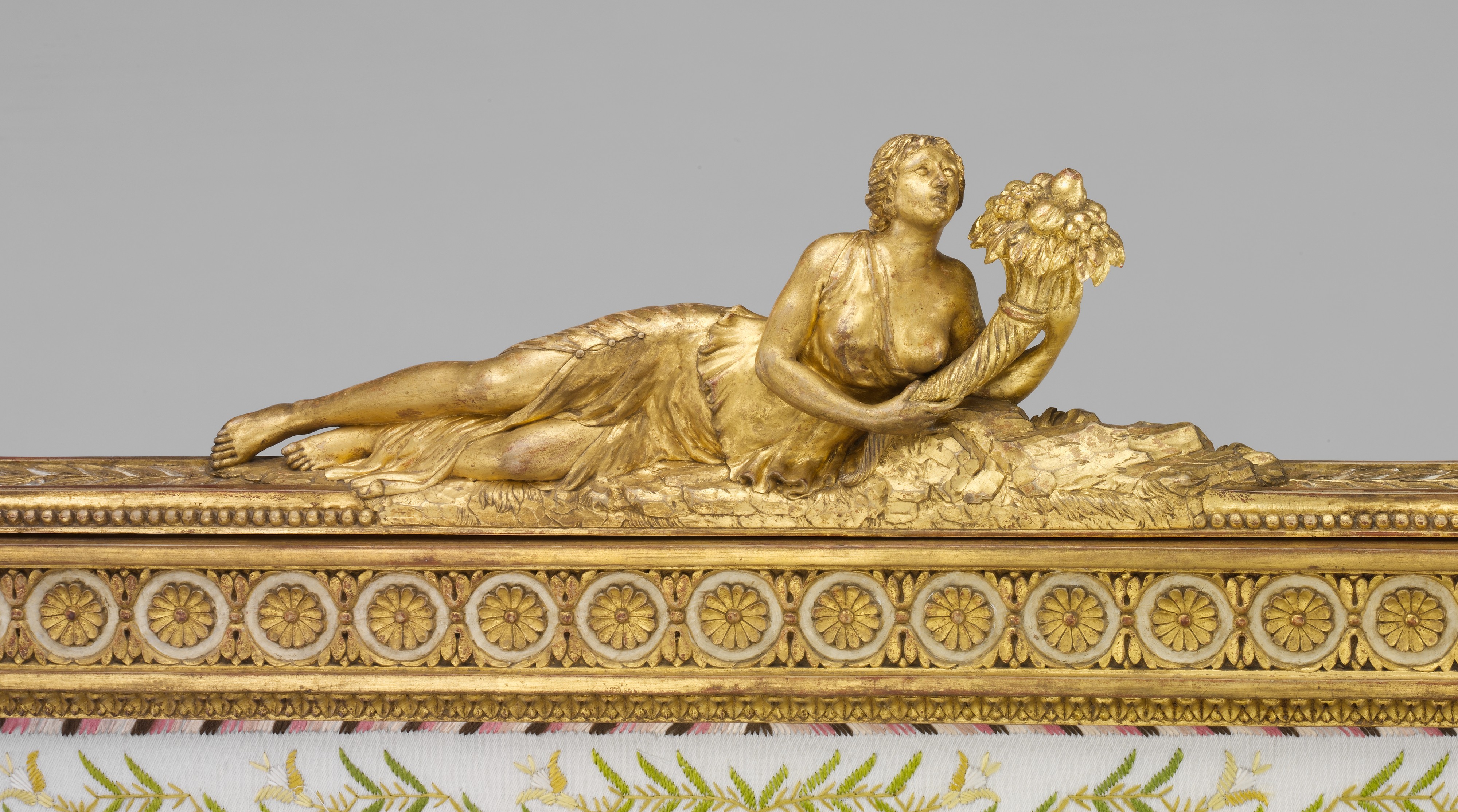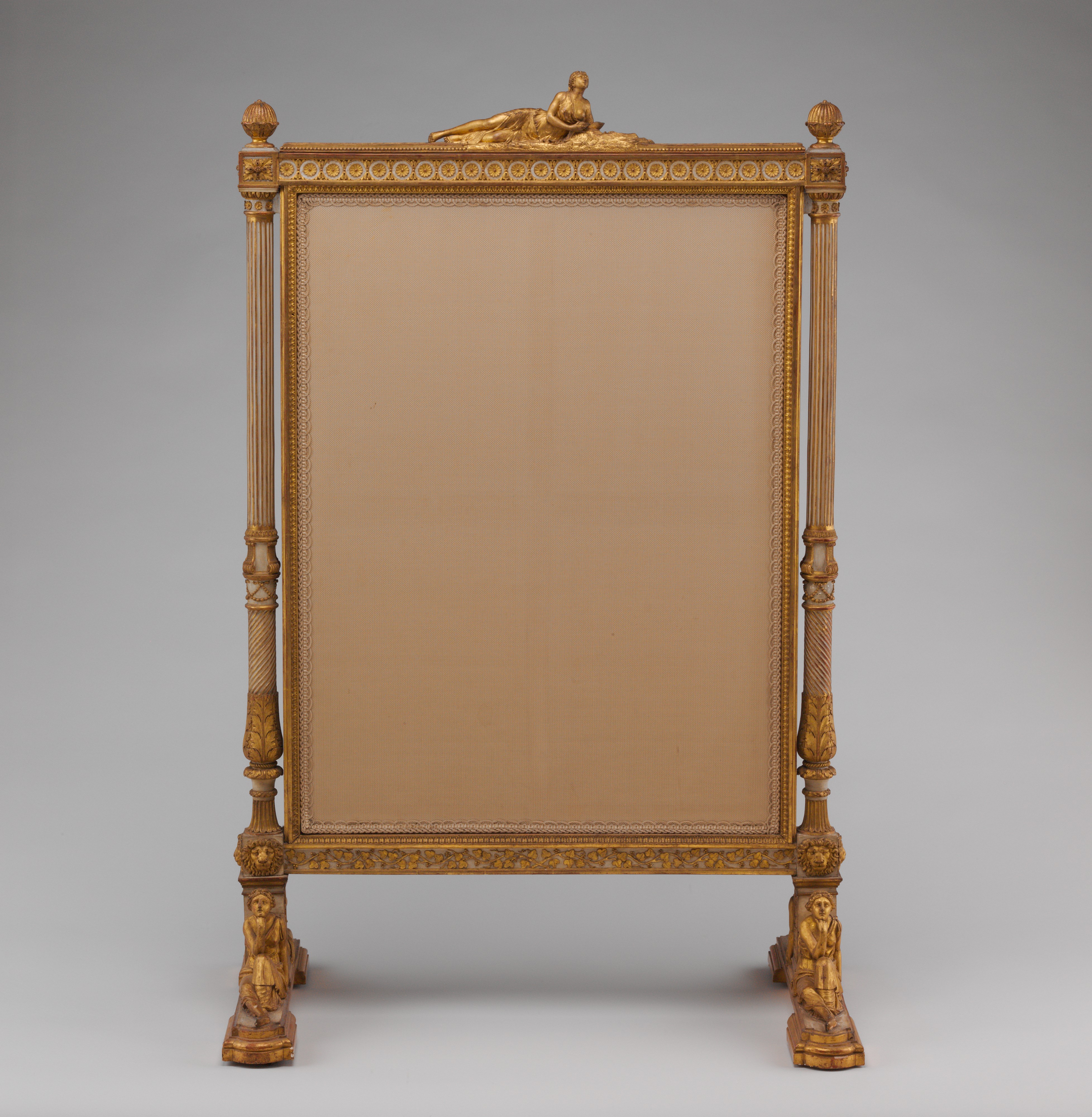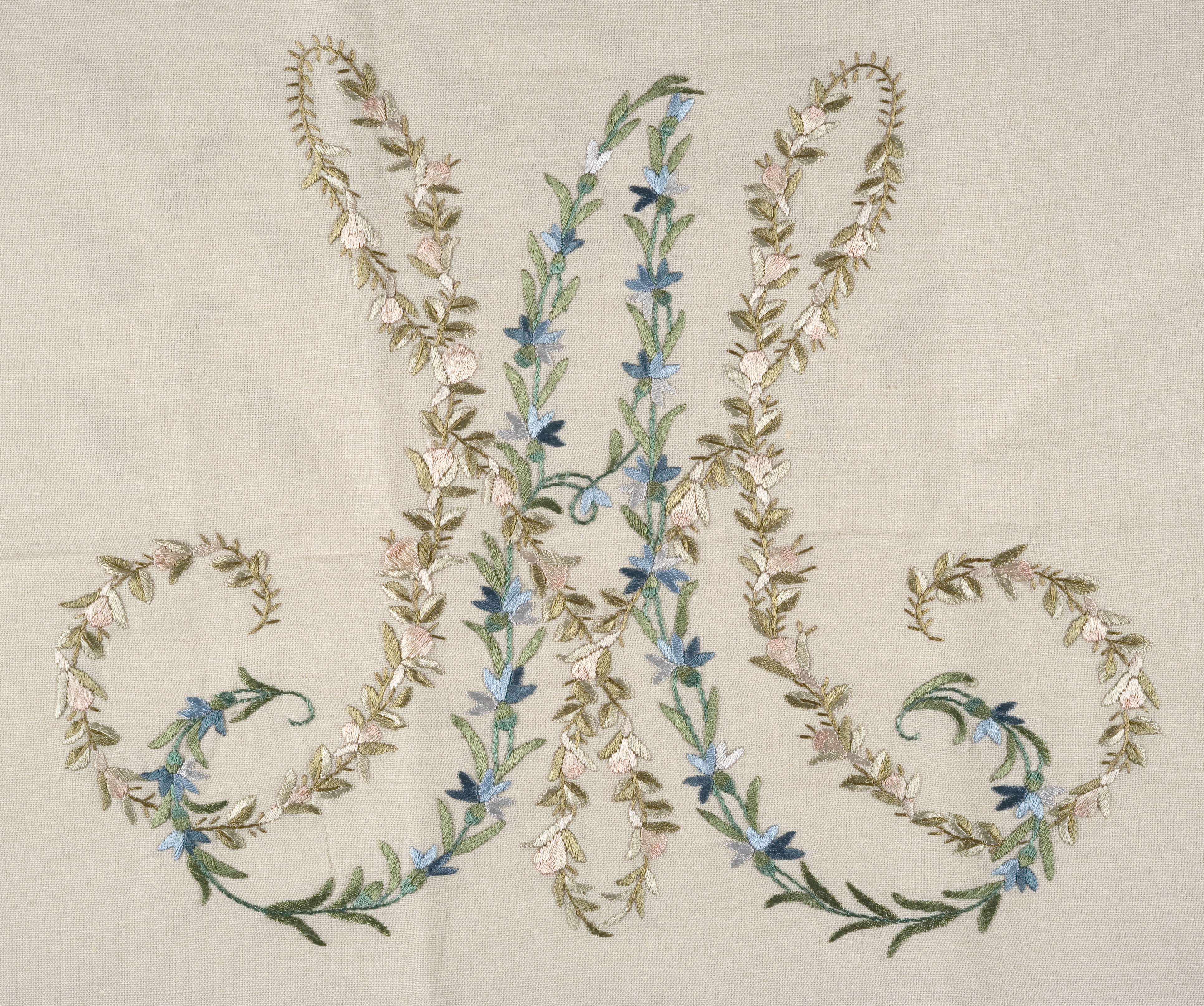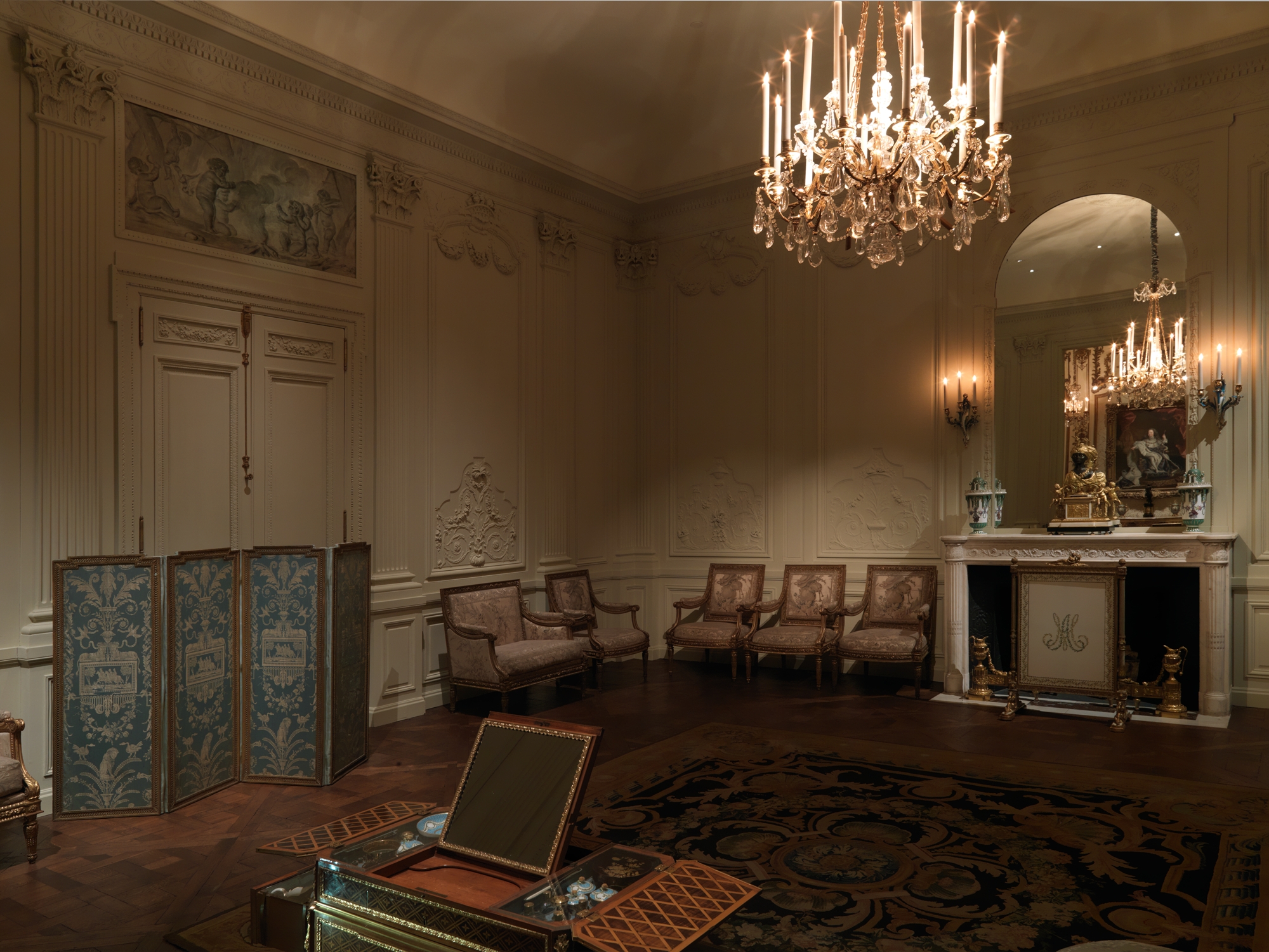Fire screen (Écran) (part of a set)
Jean-Baptiste-Claude Sené
painted and gilded by Louis-François Chatard
In 1785 Louis XVI purchased the Château de Saint Cloud in Marie Antoinette's name from the duc d'Orléans. The château, situated on a hillside overlooking the Seine not far from Paris, became the queen's favorite summer residence. Built in the sixteenth century and rebuilt during the seventeenth, the palace was in need of renovation. The architect Richard Mique (1728-1794) enlarged and altered it, and appropriate furnishings were ordered for the queen's apartment.
Many pieces of furniture were commissioned from Jean-Baptiste-Claude Sene (1748-1803), a member of an important dynasty of Parisian chair makers who received a royal appointment in 1784. Sene provided a set of seat furniture for the queen's dressing room, called her cabinet particulier ox cabinet de toilette that is described in the 1789 inventory of Saint Cloud. The daybed, the bergère (a comfortable chair upholstered between the arms and the seat), and the fire screen from the set are now in the Museum's collections. They were the gift of Ann Payne Blumenthal, the second wife of George Blumenthal. The painted and gilt frame of the low daybed is embellished with floral motifs. Six short tapering and fluted legs surmounted by Ionic capitals support the piece. The front stiles of the head- and footboard, which are of equal height, are carved with female half-figures wearing Egyptian headdresses. The bergre, which has a medallion with Marie Antoinette's initials on its top rail is decorated in a similar manner. A decade before Napoleon's North African campaign was to inspire the fashion known as égyptomanie, the queen appears to have had a taste for ornament derived from ancient Egyptian art. Seated classical female figures, rather than Egyptian caryatids, decorate the feet of the fire screen, and a woman who once held a cornucopia reclines on its top. The carver is not known, but Louis-François Chatard (ca. 1749-1819) was responsible for painting and gilding the frames.
According to the 1789 inventory the set was originally upholstered in a white-twilled cotton with rows of individual flowers embroidered by the queen herself. When the three pieces came to the Museum in 1941 only the fire screen's show cover had survived. Although the cotton ground is much discolored, Marie Antoinette's interlaced initials, composed of blossoms embroidered in satin stitch, are in remark
ably good condition.
#2286. Fire Screen (part of a set), Part 1
-
2286. Fire Screen (part of a set), Part 1
-
2287. Fire Screen (part of a set), Part 2
Playlist
Due to rights restrictions, this image cannot be enlarged, viewed at full screen, or downloaded.
This artwork is meant to be viewed from right to left. Scroll left to view more.


